And the good news is……
This week: Organically speaking; And the good news is…; Back inside the pantry; If only walls could talk; Evaporative cooling; Looking back;
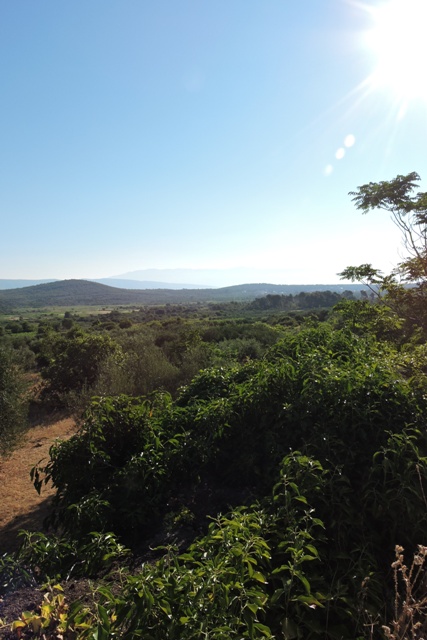
It is barely a fortnight after midsummer’s day and already I have noticed a change in the day length here in Dol.
Most mornings I am up around or before 5am. The air is cool outside and the sky is a clear powder blue colour.
The early hours are a time when I can do some writing or research on the computer. It is when the internet speed is at its fastest and also when my internet connection is free. But that is only until 06:00.
This means I can download large files or material without it affecting my daily data limit.
As the days lengthen in the spring there is a point when the sun’s arc means that I get sun through my north facing study window.
By the 21st of June, the sun comes up over the hills to the east at 05:50. It immediately lights up the room, as golden light is reflected off the white painted walls of the window void.
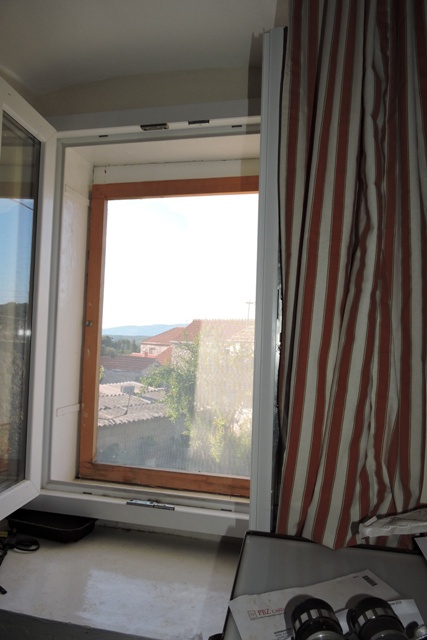
On Wednesday as I was hammering away at the keys, preparing an article for a magazine, the sunlight flooded into the room just as the Church clock sounded the first strokes of 6am.
I realised that although just into early July, we have already lost ten minutes of morning sunlight.
The northern hemisphere days are shortening by just over a minute a day. This is an almost imperceptible amount, unless you are counting the seconds.
However it is these noticable changes, however small, that give every living thing the clue that the seasons are changing.
The day length changes are elliptical though. There are small alterations to the day’s length around the two annual solstice and rapid changes around the vernal and autumnal equinox.
So as our day’s length shortens in the northern hemisphere, so those who live in the southern hemisphere can look forward to their approaching spring.
Organically speaking
I don’t use pesticides, fungicides or any other cides for that matter, on any edibles, fruits or vegetables.
It does mean that some plants get attacked by pests and diseases, but I’m happy to live with the consequences.
As we reach high summer, it is the time to start harvesting seeds.
So on Sunday morning, a refreshingly cool morning with some cloud cover and a light wind, I was down in the orchard, scissors in hand.
Paper is by far the best medium to keep seeds in, so I keep all the envelopes that bills come in. They are ideal for keeping seeds in.
Paper absorbs any moisture that is left in the seeds or the pods, preventing mould developing in damp conditions, say in a plastic bag, and the outside is easy to write on.

The spring salad leaves are finished. I let the plants run to seed because I didn’t have anything else I wanted to plant there and to make sure that I have some seeds for this autumn and next year.
There are four varieties of salad leaves, so I needed four envelopes. Usually I cut the whole seed pod off the stem, letting it fall into the envelope and then later shell the seeds out of the individual pods.
And the good news is….
Little Slama has been adopted!
Just after dawn on Sunday, after giving breakfast to my felines, I went up to take some food to the little ginger tabby cat Slama, that I found last week.
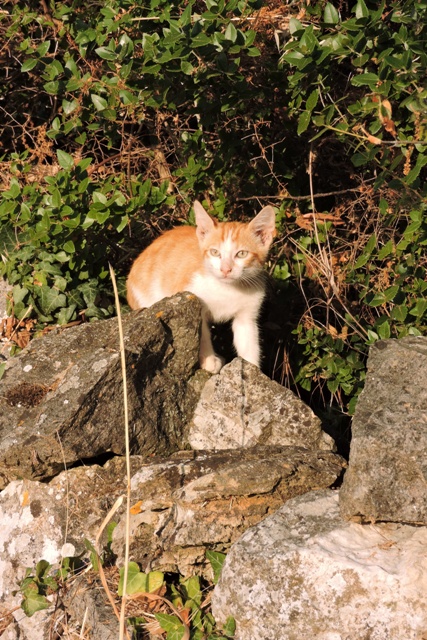
He was nowhere to be found. I was soon joined by a couple of my kittens.
The felines have an unfailing sense of knowing exactly where I am (either that or I need to shower more often!), so we all had a wander through the Maquis.
There was no sign of the little kitten. No sound beyond the raucous calling of the Cicadas.
A blackbird was singing close by and a couple of Golden Oriole, but they were the only sounds. It is unfailingly refreshing to be out early at this time of year.
At a more reasonable hour I saw my neighbour and told her that I couldn’t find the little guy. She beckoned me to follow her to where he was peacefully sleeping in one of their Konobas.
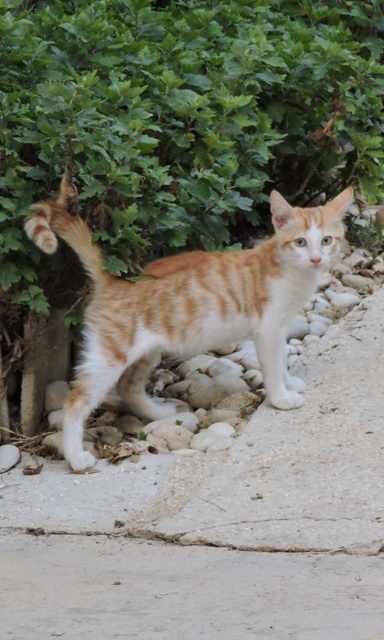
He has found a lovely home, with caring humans who will make sure that after his bumpy start to life, losing his Mum, things hereon in will only get better.
Back inside the pantry
After doing little more last week than move the accumulated spoil, I was back in the pantry first thing on Monday morning.
I have mentioned before the age old question of “How do you eat and elephant” (apologies to all pachyderm fans). The answer being, one mouthful at a time!
The problems that I have are twofold.
Firstly it is the amount of dust that is created when old lime plaster is removed from the walls.
I have just a little control over the effects that the dust has though.
I wear eye protection, an FFP3 (N99) face mask, ear defenders and gloves. Everything else, which is unprotected, gets covered in fine white powder, but the dust washes off in the shower.
The second problem is the heat and humidity at the moment, even at eight in the morning.
The confined area that I am working in, with small doors and tiny windows, even when open, do not provide much in the way of ventilation or adequately clear the dust.

This means that by 10am, usually after just 2½ hours work, I need to stop. I must confess that it is not a continuous 2½ hours of work either.
I need regular breaks to allow the air inside to clear and the dust to settle.
Lime mortar and plaster is a VERY old way of creating durable buildings.
There are buildings in the near and far east which have had their limestone mortar carbon dated to 2,000 BC. If you are interested in reading about the use of lime instead of cement, there is an excellent Wikipedia article on the subject .
Because of the low compressive strength of lime mortar, and the chemistry involved in using non hydraulic lime, old lime mortar can be crushed and simply remixed with water and used again.
When you are using Portland cement as a mortar, once the chemical reaction which hardens the cement has taken place, there is no going back.
You cannot crush and recycle cement because its chemical constituents have been changed in the chemical reaction process.
I am not planning on reusing this old mortar. There are too many impurities in it to even contemplate trying to recycle it. Between the black carbon on the surface of the under layer and pink paint on the top, it will all have to go to landfill.
Understanding the chemistry of lime mortar and plaster helps to explain the amount of dust that removing old mortar creates. Understanding however, does not solve the problem of the created dust though!
If only walls could talk
I have lamented many times in past blogs about the dearth of information about the buildings which form my home.
As I began dismantling the party wall in the pantry, I made yet more discoveries.
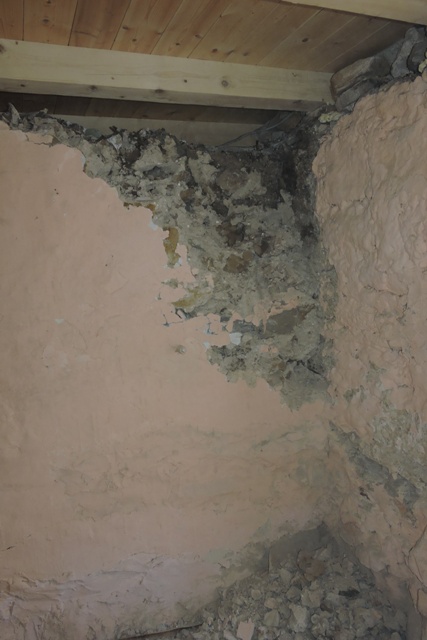
The first thing is that the wall which divides the building into two rooms is not bonded to the outside wall.
This is what is known to builders as “tumbling in”. It is where in building two walls, which are at 90º to one another, parts of each wall are lapped into the other to provide support.
This interlocking, whether using bricks, blocks or stone, adds strength to both walls.
As soon as I started to remove stones and mortar from the pantry wall, I could see that the dividing wall was not attached anywhere, in any way to the outside walls.
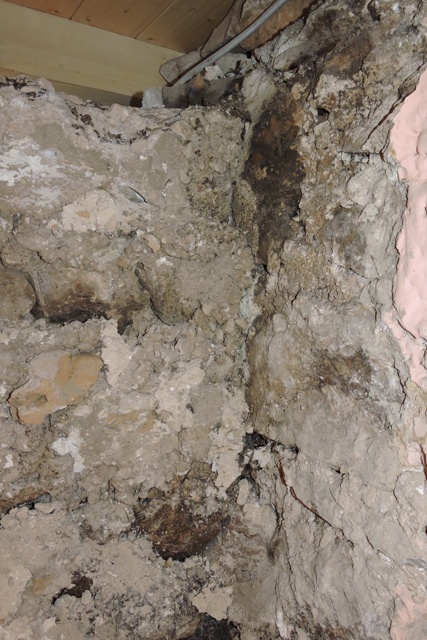
This does account for why the partition wall is not load bearing, something both Cvjetko and I thought was strange.
I suspect that when originally built, the cottage was just one room and that it has been divided much more recently.
After removing a reasonable amount of the wall in the pantry, it was obvious that the partition was about 60 cm thick, with an outer layer of sandstone on each side and rubble and mortar in between.
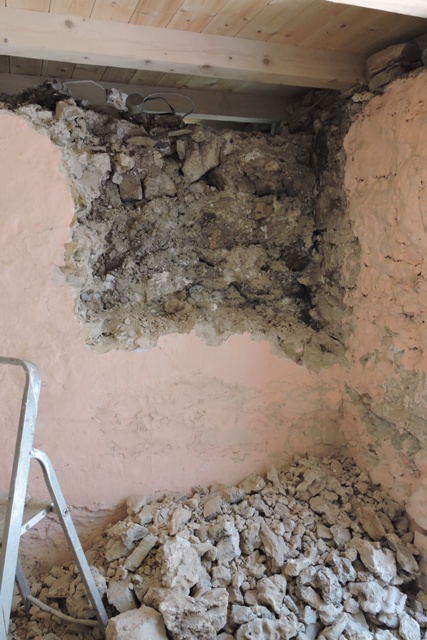
It was as I began to try and remove the outer skin which faces the utility room, that I realised it was going to be difficult.
This outer skin has been built with concrete holding the stones in place. Lime mortar is light, almost cream in colour and appears to be smooth. Concrete is grey, dark, rough and with visible aggregate.
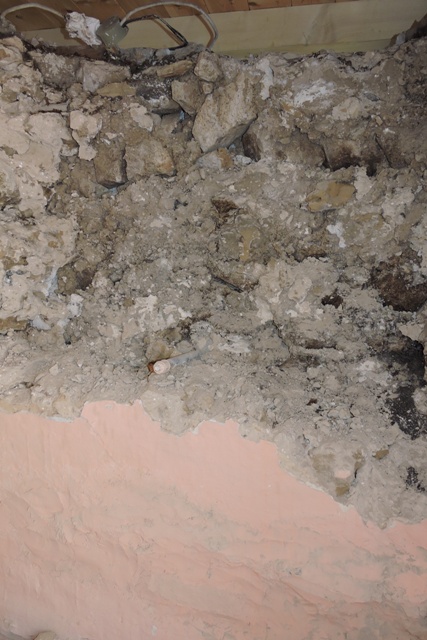
Whilst I have said that breaking lime plaster and mortar is a very messy job, it is also relatively easy.
I need only a light electric breaking hammer, a couple of chisels and my traditional lump hammer to break the mortar and remove the stones.
My hand tools have made no impression on the concrete and the electric breaking hammer is not powerful enough.
I have a very large breaking hammer, but it is no use for this job because of its weight and size.
At close to 20 kilograms it is too heavy for me to hold up in the air, to break the wall open.
I need to think of a plan ‘B’ (besides small explosive breaching charges) to break apart this extremely hard concrete.
Doing a couple of hours work every day, followed by a shower and change of clothing, does mean that there is progress, albeit the progress is rather slow.
But as this is the summer, when all building work ceases, I have until September to get the place ready for my friend Cvjetko to come, lay a new floor and plaster the walls.
However, looking at the calendar as we enter the first week of July, September will be here all too soon….
Evaporative cooling
Evaporative cooling is something we use all the time.
As we (and other mammals with skin sweat glands) perspire, the airflow across our skin evaporates the sweat and in doing so, cools the skin.
This is only effective up to the point where evaporation stops taking place.
If there is too much humidity, heat and little or no evaporative cooling, we can quickly suffer heat stroke, which is a life threatening condition.
But evaporative cooling doesn’t only work on living things. In fact every afternoon I have to try and cool down my satellite internet system.
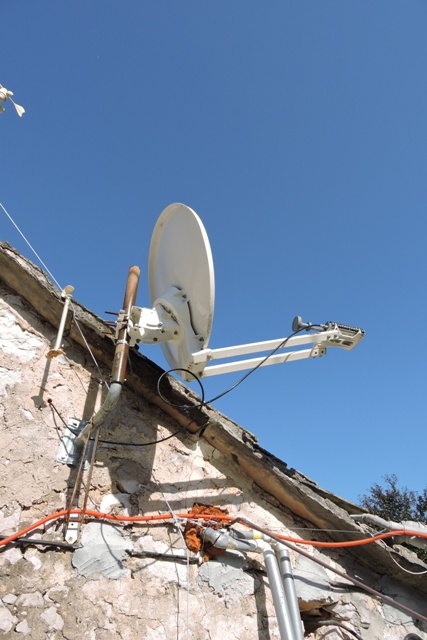
Around 16:30 each day, as the sun continues on it’s apparent movement towards the west, it illuminates the metalwork at the rear of my satellite internet dish antenna.
The antenna is very precisely “pointed” at a geostationary satellite, to give me both an up and a downlink. With no landline telephone, it is the only means of communication that I have.
With an ambient air temperature of over 30ºC in the shade, coupled with the sun’s radiated heat, the metal of the frame which holds the satellite dish in place, expands in the heat.
This expansion and consequential distortion throws the alignment of the dish out. I then loose my connection with the outside world.
It took me a while to work out why I kept losing my connection around the same time every day.
However the remedy was not too difficult. It is evaporative cooling.
Where I worked in Kingston upon Hull, the city is divided down the centre by the river Hull. It is crossed by a number of lifting and swing bridges.
When the heat of the then English summers was upon us, and this was before Climate Change, as soon as the Mytongate Bridge was opened for river traffic, it would swell in the sunshine because of the thermal expansion.
The metal structure having expanded, then wouldn’t close.
The result was traffic chaos in the city, so police motorcyclists and cars were dispatched to take control of junctions, to try and resolve the traffic jams.
There were two options. One was to wait until the sun dropped in the sky and the metal cooled and contracted, the second was to call the Fire and Rescue Service.
This isn’t a new technique. For decades in many parts of the world, the local FRS would use large quantities of water to cool the metal parts of structures that had expanded..
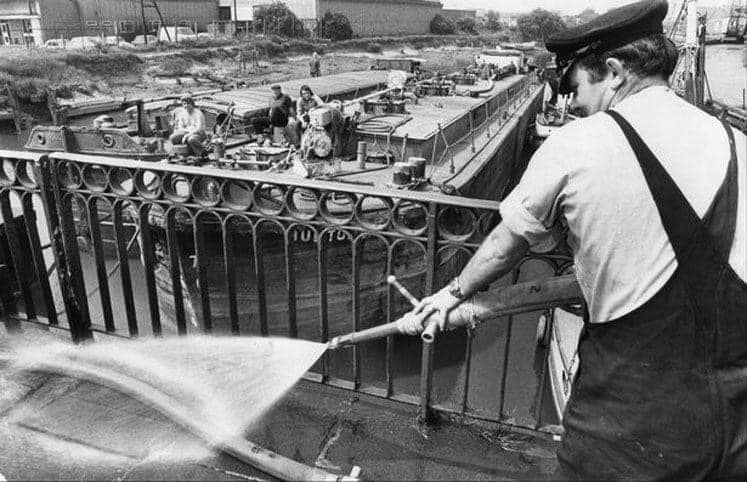
I use a 5 litre pressure sprayer and soak the metal parts of the satellite antenna, allowing the water to evaporate dry before soaking again.
This cools the metalwork, so reducing the thermal expansion and gets my system back on line. Which reminds me, I need to go and spray the antenna again, right now… NCG
Looking back – Week 27
This is the start of links to past issues of the Life in a Dol House blog.
2014/27 A cruel and unusual punishment
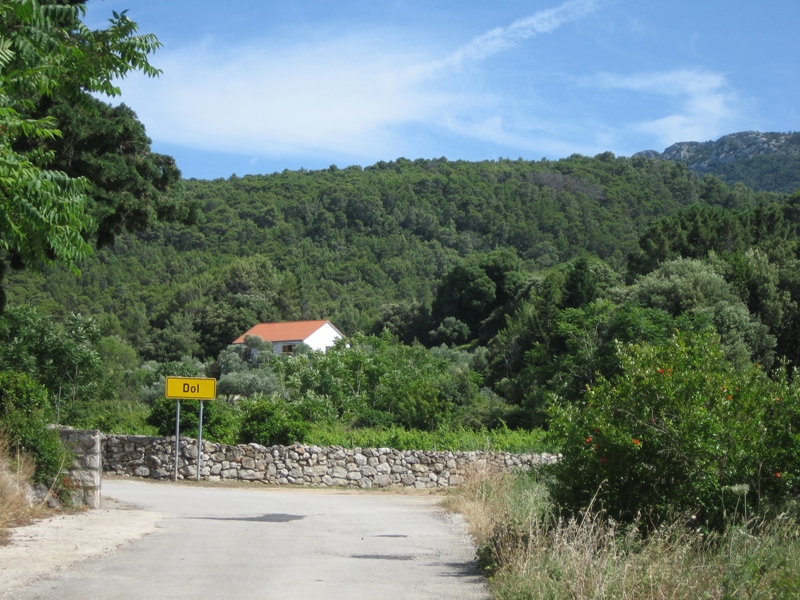
2015/27 Three tiny pieces of ancient history
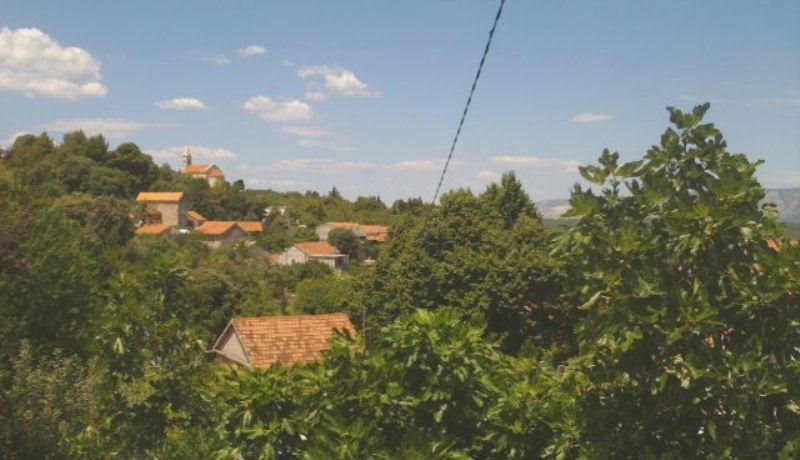
2016/27 Mediterranean Cricket
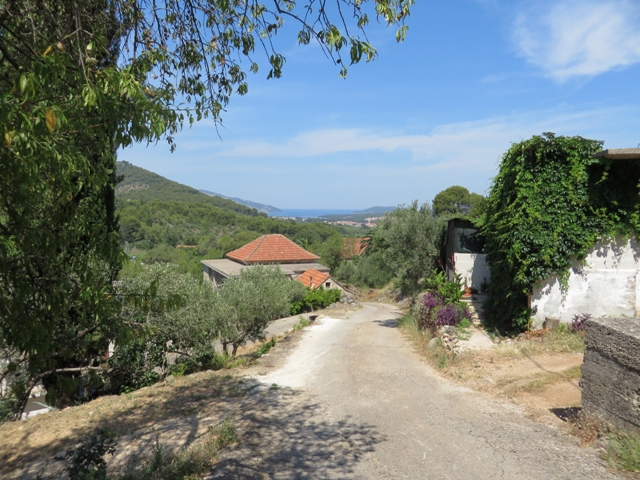
2017/27 This week’s lesson – Don’t wallpaper when it’s +35ºCh
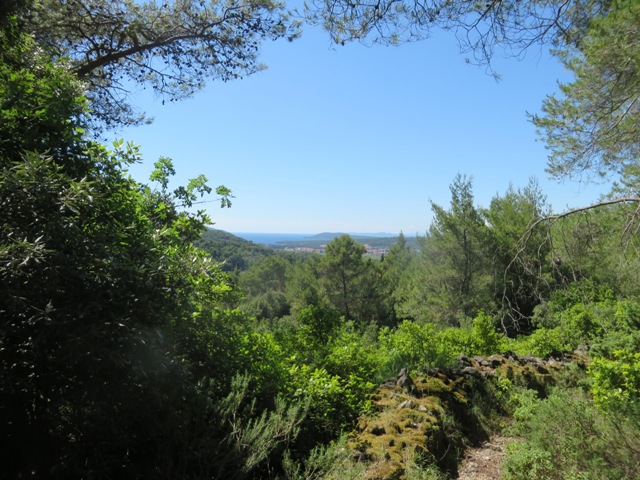
2018/27 Harvest time
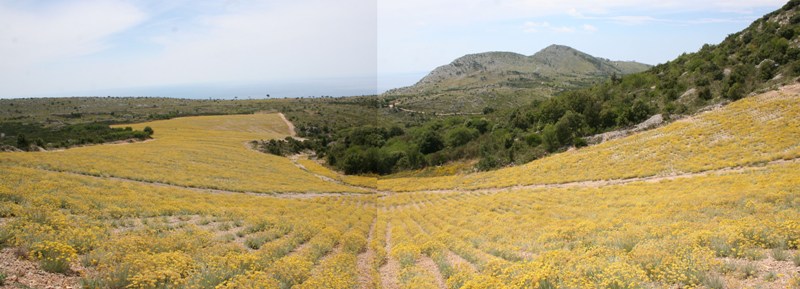
2019/27 Toad in the hole
2020/27 Thirty at eight